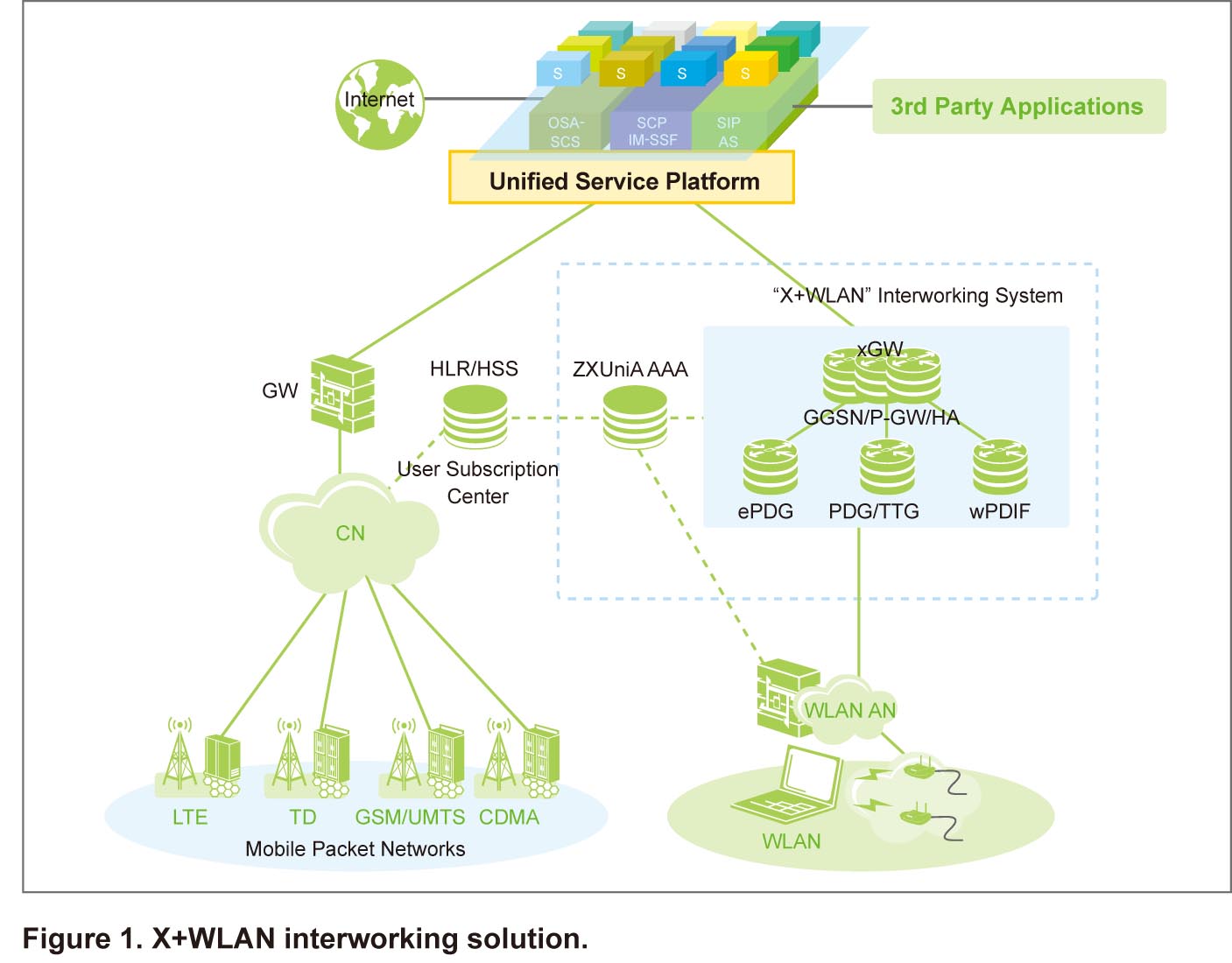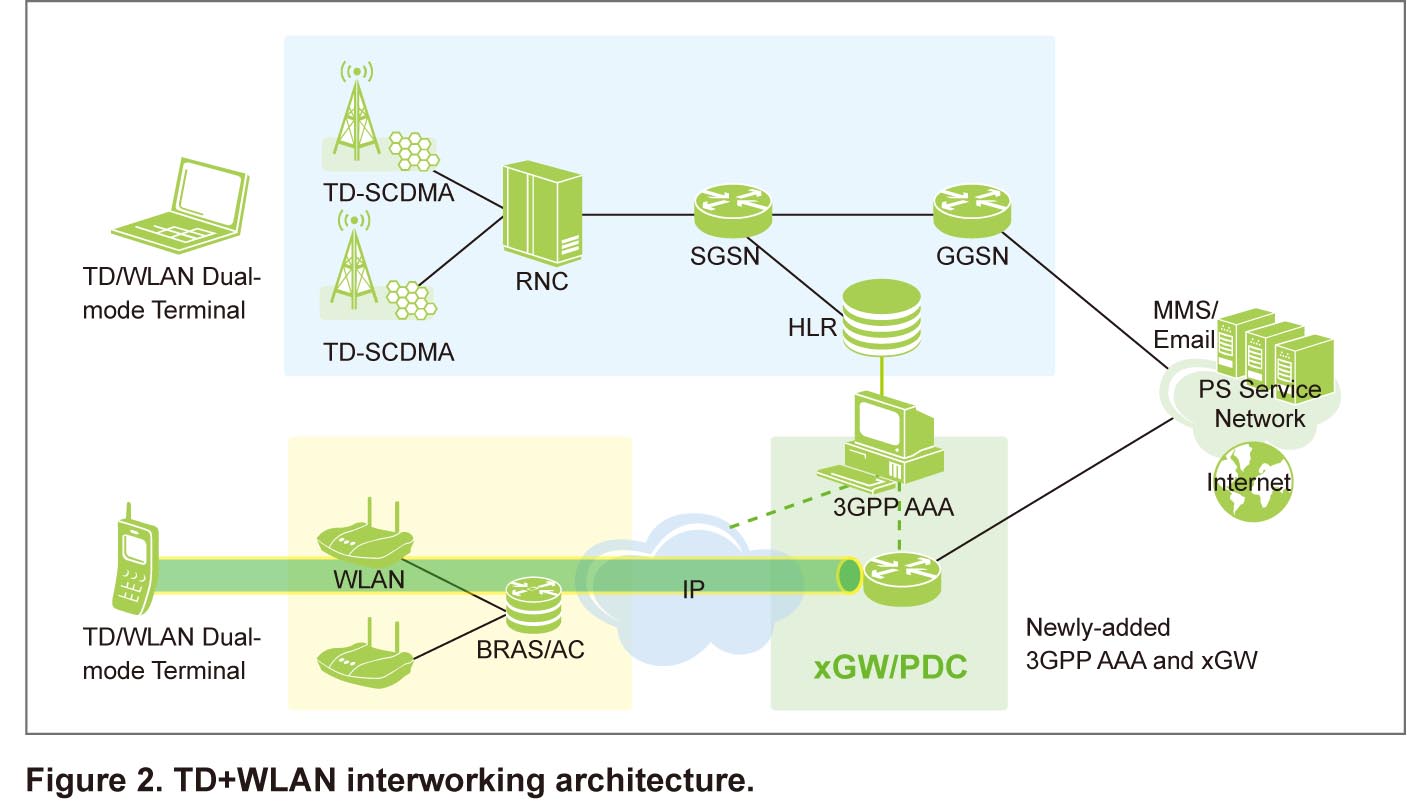A Study on Interworking Between WLAN and Mobile Networks
WLAN technology has been accepted by operators as an important supplement to mobile data networks. It has high bandwidth, is inexpensive, and also has a high terminal penetration rate. A primary concern for operators has been making good use of field-proven 2G/3G mobile network architecture and protocols to provide differentiated and competitive services while, at the same time, reducing WLAN network construction and operation costs. By cooperating closely with operators, ZTE has developed a flexible, converged core network architecture that effectively supports interworking of WLAN and mobile networks.
X+WLAN Interworking Solution
3GPP has defined the interworking of WLAN and mobile networks through six different scenarios: common billing, 3G-based access control and charging, access to 3G Packet-Switched (PS) services, access to 3G PS-based services with service continuity, access to 3G PS-based services with seamless service continuity, and access to 3G Circuits-Switched (CS) services with seamless mobility. These various scenarios describe an increasing level of convergence. From scenario 1 to 6, WLAN and mobile networks become more tightly integrated and more demanding in terms of interworking requirements.
3GPP has also proposed a solution for access to Evolved Packet Core (EPC) via I-WLAN and non-3GPP networks. However, the solution does not meet the demands of most operators because it defines a complicated architecture—all features are WAG and PDG—and operators may have different interworking requirements.
ZTE’s X+WLAN solution supports interworking between WLAN and mobile networks such as GSM, UMTS, CDMA and EPC. The foundation of X+WLAN interworking consists of packet core network gateway (xGW), unified authentication system (ZXUniA AAA), and integrated terminal, as shown in Figure 1.

xGW serves as a high-performance platform with high integrational capability. It can integrate multiple functional network elements such as PDG/TTG, ePDG, wPDIF, GGSN, P-GW, and HA, providing user tunnel management, context management, authentication and authorization, routing and forwarding, and mobility management functions. ZXUniA AAA integrates 3GPP AAA and obtains user authentication and authorization information from HLR. It provides user authentication, authorization, and accounting functions. The terminal used in X+WLAN interworking must support (u) SIM-based or UIM-based authentication, and must also support a tunnel established between itself and xGW for tunnel management.
X+WLAN interworking brings about the following advantages for operators:
■ A unified user ID is provided for access to WLAN and mobile networks. The (u) SIM or UIM card is an access ID for WLAN. This helps operators simplify their user subscription management;
■ In WLAN, users have direct access to services deployed on the packet core networks to enhance user broadband experience. They can send or receive MMS, browse WAP, and access other streaming media services;
■ WLAN effectively diverts a great deal of nomadic 2G/3G data traffic, freeing up more 2G/3G packet bandwidth.
Deployment Scenarios
X+WLAN interworking can be deployed in different scenarios to meet operators’ requirements. It supports interworking between WLAN and various mobile networks; in particular, it has been widely deployed by China Telecom for CDMA+WLAN interworking.
As defined in 3GPP, the interworking of WLAN and 3GPP mobile networks can be implemented gradually or by leaps from Scenario 1 to scenario 6. In phase 1, for example, 3GPP AAA is first introduced to achieve unified authentication in scenario 2. In phase 2, xGW (PDG) is then introduced to access 3G PS services in scenario 3. And in phase 3, xGW is upgraded to support ePDG to evolve to EPC.

Internetworking of TD-SCDMA and WLAN is illustrated in Figure 2. At the network side, two elements 3GPP AAA and xGW (PDG) are added for unified authentication of WLAN users and their access to the PS domain. A standard D’/Gr interface is adopted between 3GPP AAA and HLR. Generally, 3GPP AAA signaling address and I-WLAN user subscription information can be added without any alternation to the existing HLR. WLAN AN needs to support EAP-based authentication architecture and adopts RADIUS protocol to communicate with 3GPP AAA. The BOSS system is required to create traffic statistics and complete related billing and rating according to the specific service package users have selected.